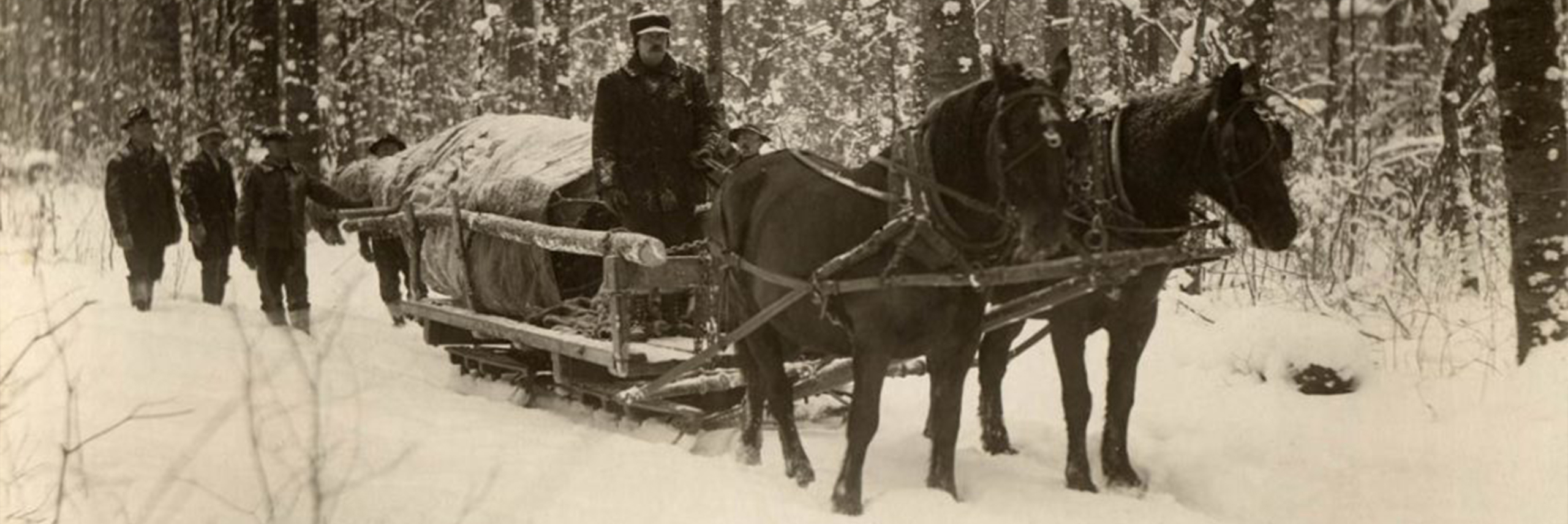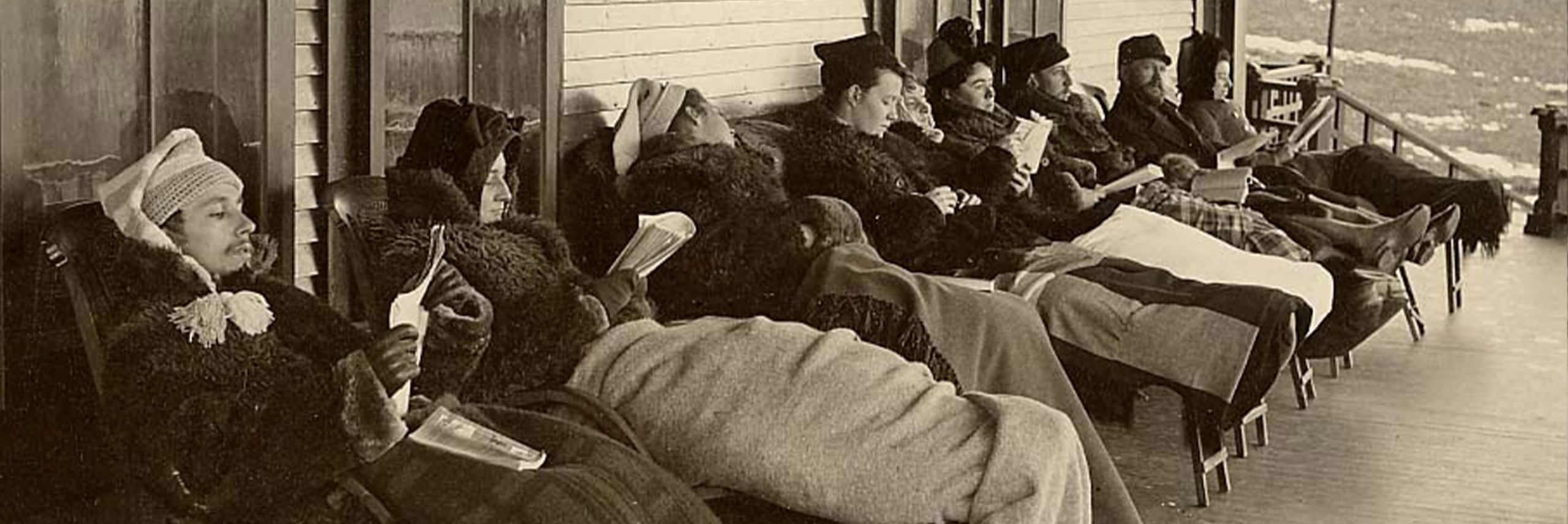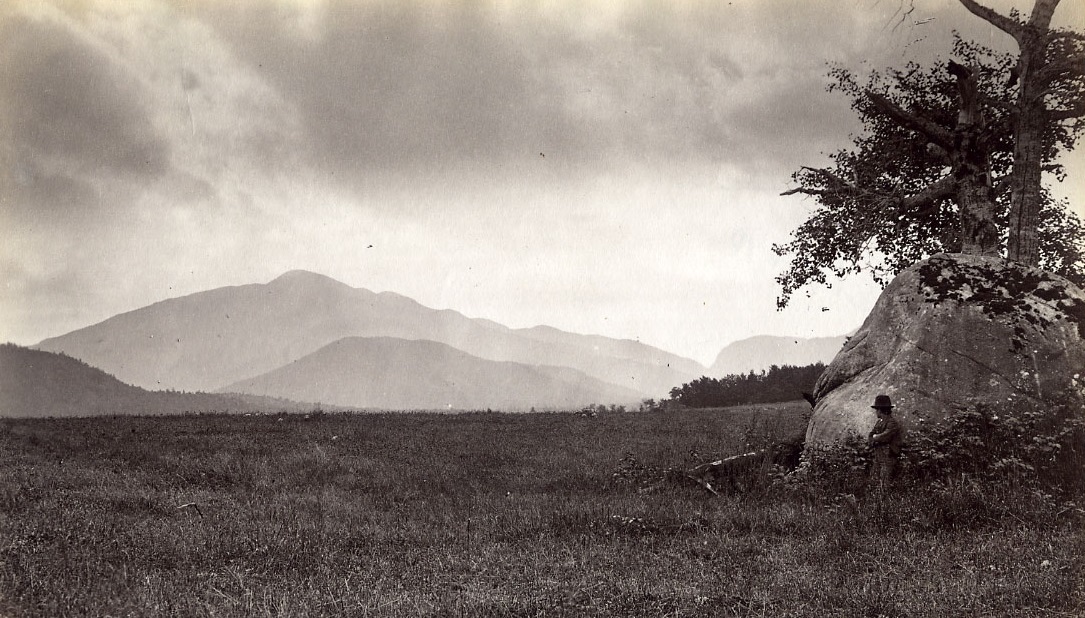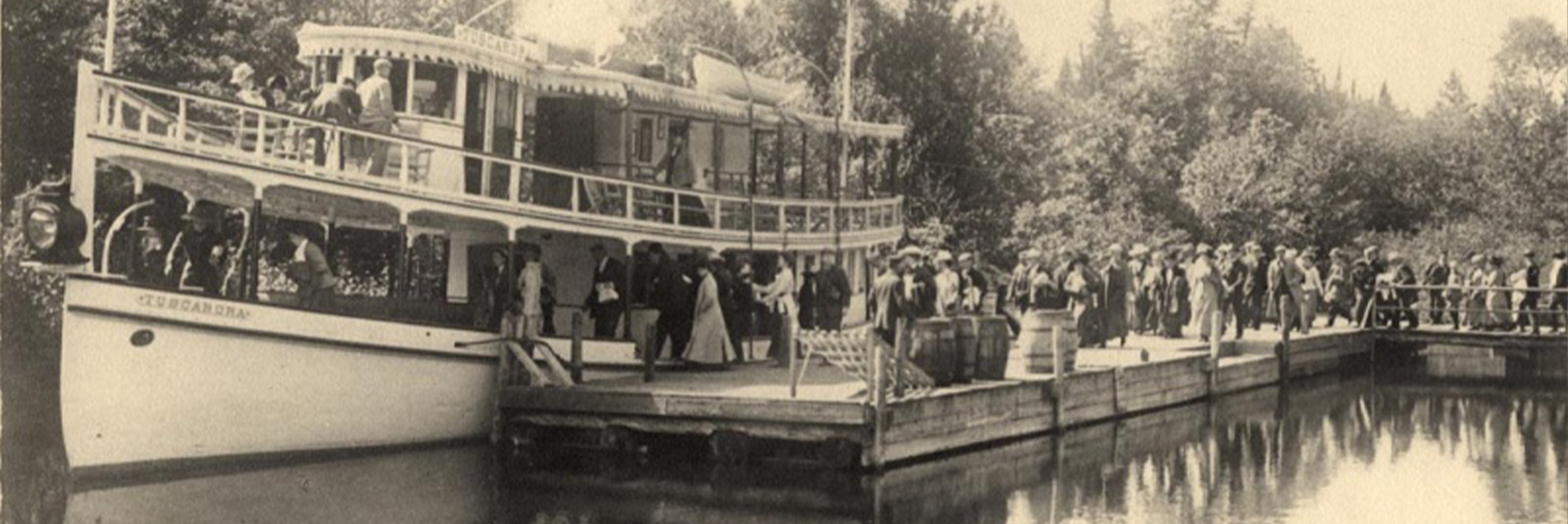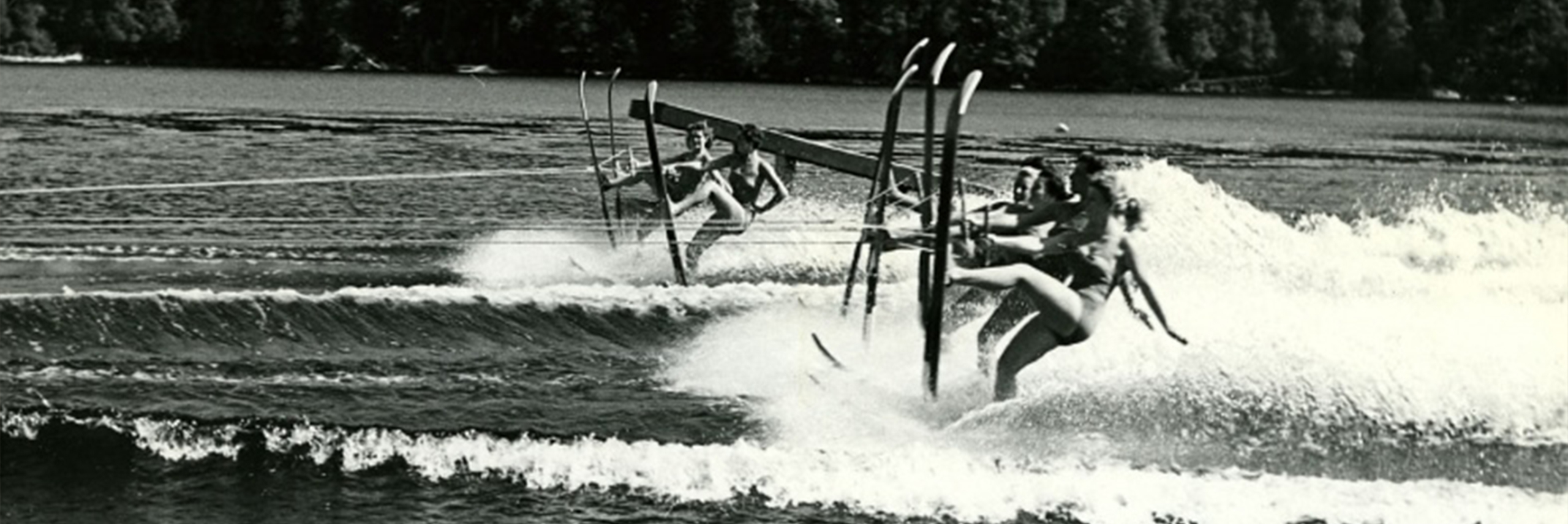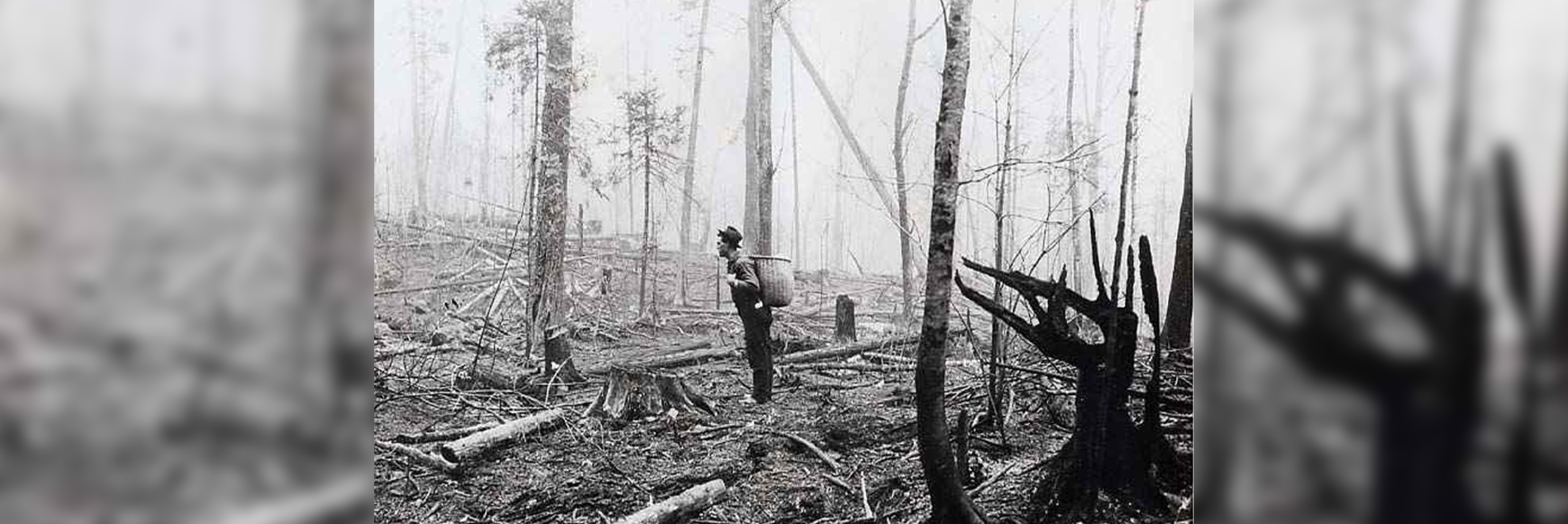Balsam Traditions-Christmas Market
The Balsam Fir tree has been an important natural resource for the Adirondack region for many years. Below are exerpts from various sources that were used in a Balsam Traditions poster series discussing the seasonal importance of balsam.
“As a Christmas tree, balsam has two prime advantages over other species: fragrance and durability. The smell of a fresh-cut balsam is something out of this world—or at least out of the city world. It is like bringing a piece of the Adirondacks indoors.”
“The Balsam,” in NYS Conservationist, December 1946.
“The Dealers in Christmas trees come mainly from Herkimer and other counties in the north woods of this State… The men who deal in Christmas trees are all woodsmen, who, after cutting their own stock, take it to market.”
NY Times, December 17, 1893.
“Jobbers who supply the markets and retail trade must begin their harvest preparations early. By October or November they must have located a source of supply and arranged for men to cut and transport the trees to market. Some buy from the owners on the stump, and cut and hail them to market themselves. Others buy trees cut and bundled at the roadside.”
A.S. Hopkins, “Christmas Trees and Land Use,” in NYS Conservationist, December 1946.
“Beginning in November of every year, huge truckloads of Christmas trees roll out of the Adirondacks, destined for the city markets. In former years entire train loads of trees might be seen as they made their way southward; but, with the demise of the Adirondack railroads, motor trucks now serve the same function.”
Floyd S. Hyde, Adirondack Forests, Fields, and Mines, 1974.
“The great market for Christmas greens in New York is along the North River front… Here the busy streets seem forest roads, so lined are they with trees of spruce, balsam, pine and cedar.”
NY Times, December 19, 1878.
“The place where the tree market is situated is just at present a favorite spot for loungers. They come by parties, lie around on the fragrant boughs, and inhale the fragrant and pungent aroma of the trees.”
NY Times, December 17, 1893.
“Quite a business had grown up on the Islands in Lake Champlain in the shipment of evergreens to New York City for holiday decorations. One day in early December 1888, the steamer Maquam brought 82 bags to Plattsburgh where they were sent south by rail.”
Essex County Republican, 1888.
“During November many old-fashioned housewives are busy making Christmas presents for their less fortunate friends who have to live in cities or far from the pine woods. These presents do not change from year to year and are nonetheless welcome for the lack of novelty. They are pine pillows, filled with fresh-cut evergreen needles in lavishly decorated or utterly simple cloth cases. One whiff from the box when opened in a city and the breeze that furrows an evergreen mountainside or ruffles a mountain lake comes softly into the room. They may be called pine pillows but the housewife who is particular about her handiwork raises Cain if the men dare to bring anything in from the woods for her except balsam.“
William Chapman White, Just About Everything in the Adirondacks, 1960.
Information from Balsam Traditions (a poster series) by Todd DeGarmo. Adirondack Museum and Crandall Library, 1992, with support from the New York State Council of the Arts — Folk Arts Program.


